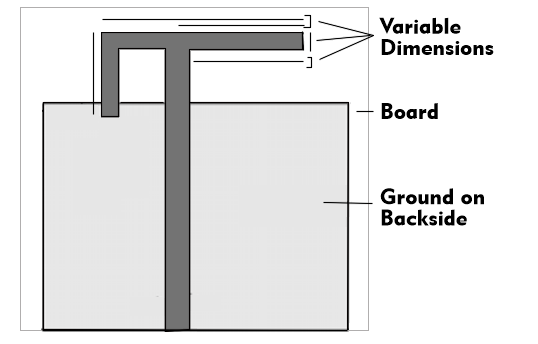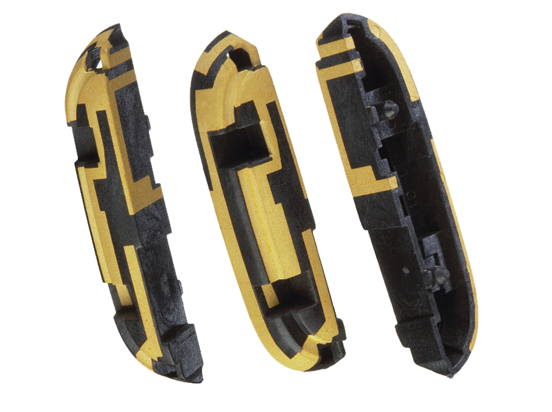planar inverted F-shaped antenna (PIFA)
Mobile devices of the 1990s had a rod antenna attached to the outside of the housing. Starting in the mid-90s, more flexible cell phone antennas were developed that were integrated into the housing.
Since dual-band cell phones and smartphones receive several frequency ranges for GSM and UMTS but also for Bluetooth, WLAN or the GPS system, a flexible antenna concept was developed that covers several frequency ranges simultaneously. These are F-shaped antennas, which are constructed like a stripline on a printed circuit board. In the F-shaped antenna, the resonant frequency can be changed by changing the antenna geometry, namely the width and spacing of the conductors. As a result, these F-shaped antennas can be used to receive multiple frequency bands.
The F-shape allows for flexible designs, it can be planar and can also be adapted to a wide variety of housing shapes. The concept realized in F-shape is called Planar Inverted F-Shaped Antenna (PIFA). PIFA antennas can be built for the GSM and UMTS standards at 900 MHz, 1,800 MHz, 2 GHz, for Bluetooth at 2.5 GHz and WLANs up to the 5 GHz range.
PIFA antennas are microstrip antennas, like planarpatch antennas. They are made of striplines and can be shaped in any way and designed to be extremely flat. Because they are omnidirectional, they are relatively sensitive to interfering RF irradiation.


